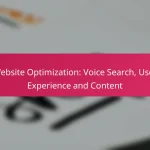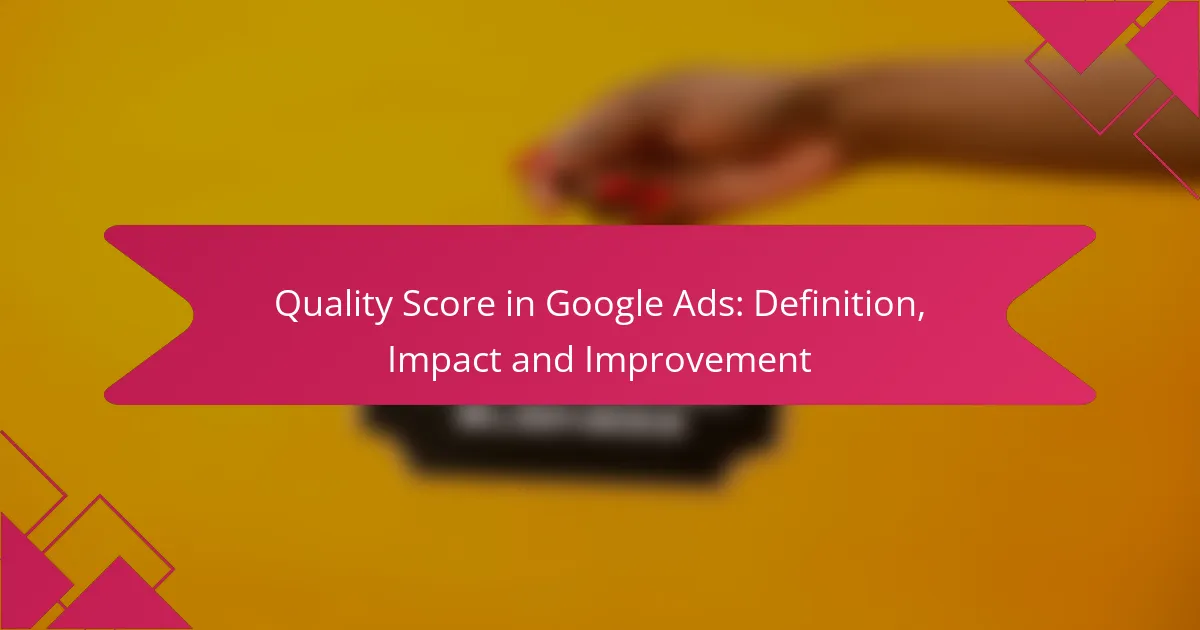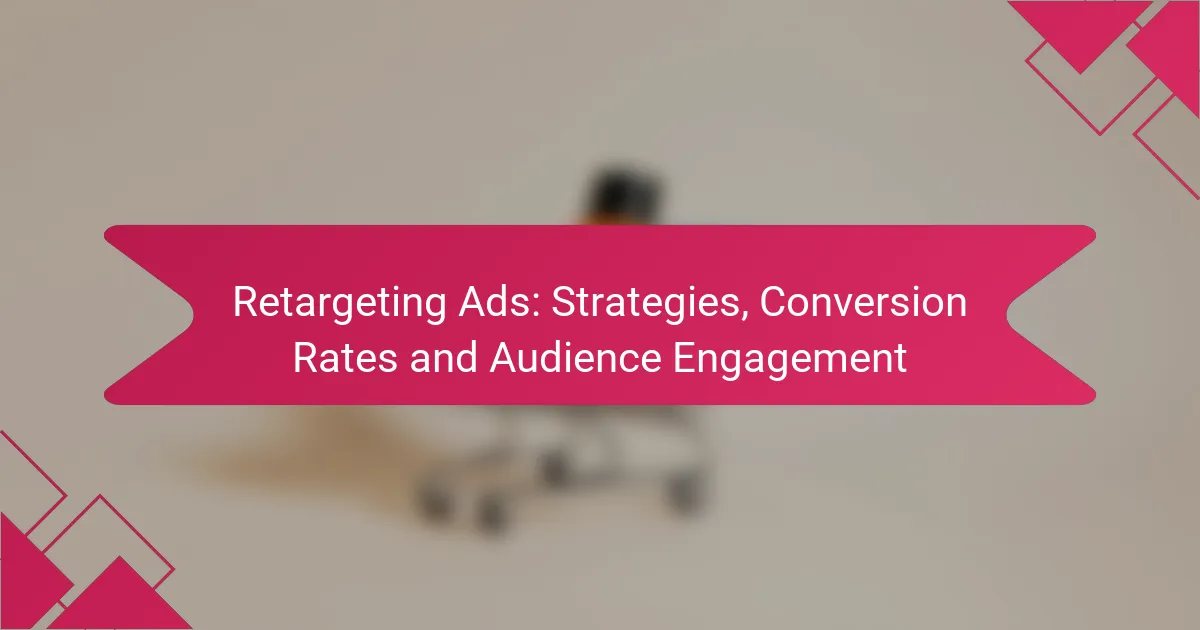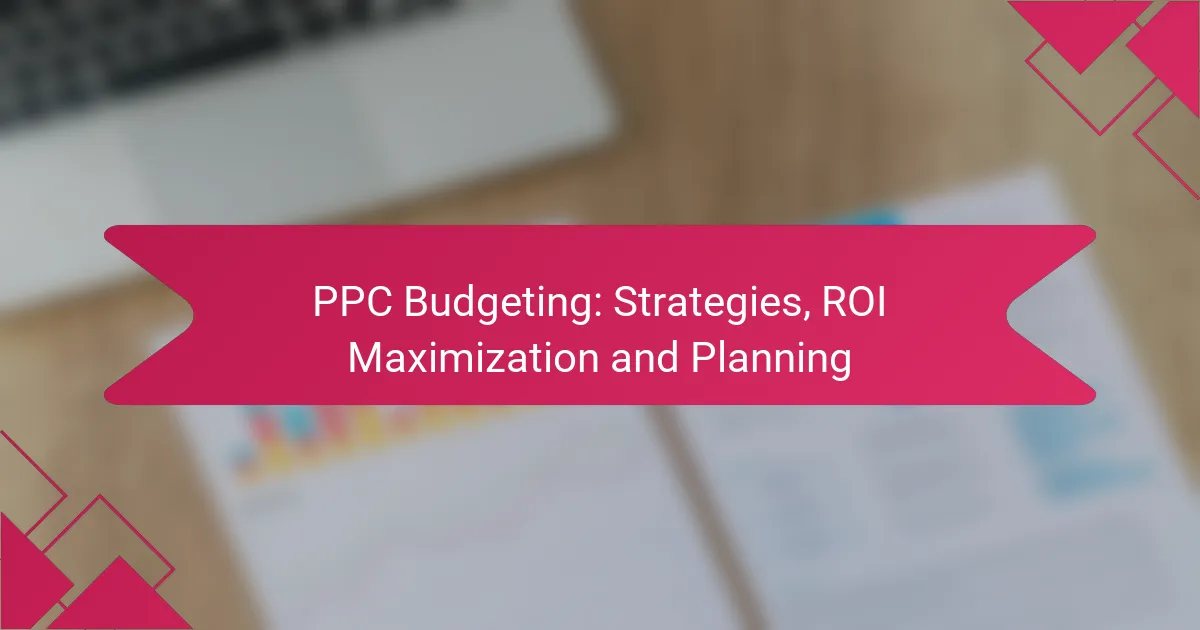When deciding between Google Ads and Facebook Ads, it’s essential to consider your marketing objectives and target audience. Google Ads is optimal for capturing high-intent searches and driving immediate traffic, while Facebook Ads excels in engaging users and building brand loyalty through targeted demographics. Understanding the strengths of each platform can help you make an informed choice that aligns with your business goals.
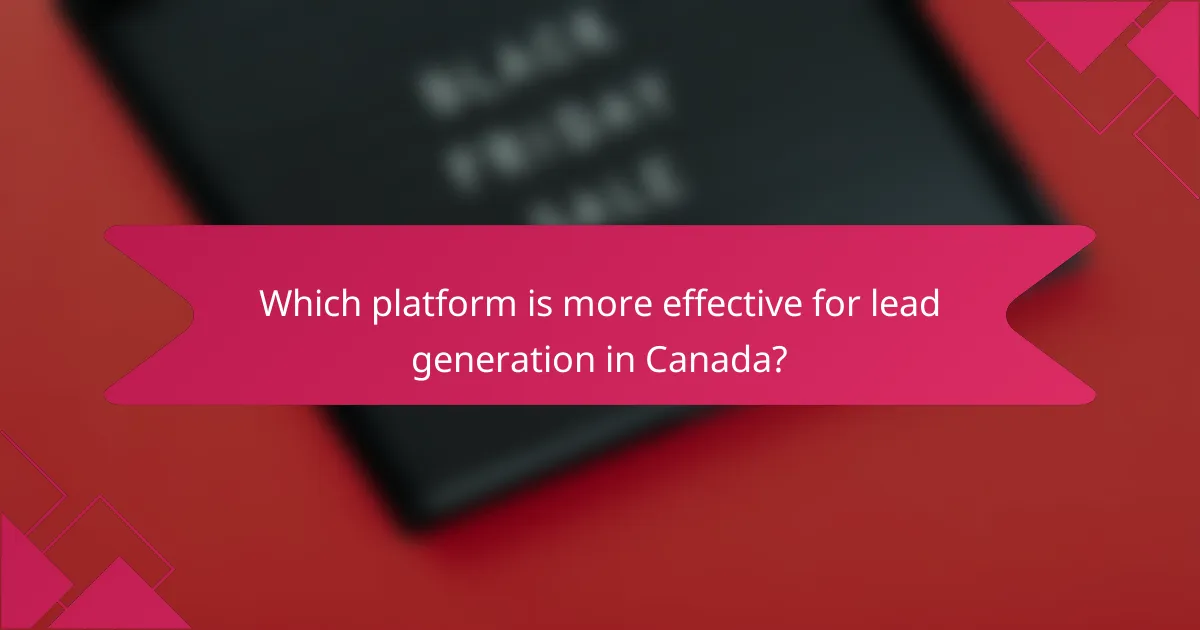
Which platform is more effective for lead generation in Canada?
For lead generation in Canada, Google Ads tends to be more effective for capturing high-intent searches, while Facebook Ads excels in fostering targeted engagement. The choice between the two should depend on your specific goals, audience, and the nature of your product or service.
Google Ads for high-intent searches
Google Ads is particularly powerful for lead generation when users are actively searching for specific products or services. This platform allows businesses to target keywords that indicate strong purchase intent, making it ideal for capturing leads at the moment they are looking to convert.
Consider using Google Ads if your business offers services like home repairs, legal advice, or financial consulting, where potential clients are likely to search for solutions actively. Bidding on relevant keywords can yield high-quality leads, often translating to better conversion rates.
Facebook Ads for targeted engagement
Facebook Ads are effective for lead generation through targeted engagement, especially for businesses aiming to build brand awareness or reach specific demographics. This platform allows advertisers to create highly tailored audiences based on interests, behaviors, and location, which can be beneficial for nurturing leads over time.
Utilize Facebook Ads if your goal is to engage potential customers with compelling content or offers. For instance, promoting a free webinar or a downloadable guide can attract users who may not be ready to purchase immediately but are interested in your offerings. This approach can help build a pipeline of leads that can be nurtured through follow-up marketing efforts.

When should I use Google Ads?
Google Ads is best utilized when you need immediate visibility for your products or services, particularly for searches with high intent. This platform is effective for driving traffic quickly, especially when targeting specific keywords that potential customers are actively searching for.
Best for immediate visibility
Google Ads provides instant exposure on search engine results pages, making it ideal for businesses looking to appear at the top of relevant searches. When users type in keywords related to your offerings, your ads can show up immediately, often within minutes of launching a campaign.
To maximize this visibility, focus on high-intent keywords that directly relate to your business. For example, if you sell running shoes, targeting phrases like “buy running shoes online” can attract customers ready to make a purchase. Regularly monitoring and adjusting your bids can help maintain your ad’s position.
Ideal for local services
Google Ads is particularly effective for local services, allowing businesses to target customers in specific geographic areas. By using location-based keywords and settings, you can ensure your ads reach potential clients nearby, which is crucial for services like plumbing, landscaping, or restaurants.
Utilizing features like location extensions can enhance your ads by displaying your address and phone number, making it easier for local customers to contact you. Consider setting a budget that aligns with your local market’s competitive landscape, as costs can vary significantly by region.

When should I use Facebook Ads?
Facebook Ads are ideal when your goal is to engage users on a personal level and build brand loyalty. They are particularly effective for targeting specific demographics and enhancing brand visibility.
Effective for brand awareness
Facebook Ads excel in creating brand awareness due to their extensive reach and visually engaging formats. Advertisers can utilize eye-catching images and videos to capture attention, making it easier to introduce new products or services to potential customers.
Consider using Facebook Ads when launching a new campaign or product, as they can help you reach a broad audience quickly. A good practice is to allocate a portion of your budget to awareness-focused ads, especially in the early stages of your marketing strategy.
Great for demographic targeting
Facebook’s robust targeting options allow advertisers to reach specific demographics based on age, location, interests, and behaviors. This capability is particularly useful for businesses aiming to connect with niche markets or specific audience segments.
Utilize Facebook’s audience insights to refine your targeting strategy. For example, if you are a local restaurant, you can focus your ads on users within a certain radius who have shown interest in dining out. This targeted approach can lead to higher engagement rates and better return on investment.

What are the key differences between Google Ads and Facebook Ads?
Google Ads and Facebook Ads differ primarily in their approach to advertising. Google Ads focuses on intent-driven searches, while Facebook Ads leverage user demographics and interests for targeted marketing.
Ad placement and format
Google Ads typically appear as text-based ads on search engine results pages and across the Google Display Network, which includes various websites and apps. Formats can include text, image, and video ads, allowing for flexibility depending on the campaign goals.
In contrast, Facebook Ads are integrated into users’ social media feeds and can take the form of images, videos, carousels, and stories. This visual-centric approach can enhance engagement, especially for brands aiming to build a community or showcase products effectively.
Targeting capabilities
Google Ads excels in targeting users based on their search queries, allowing advertisers to reach potential customers actively looking for specific products or services. This intent-based targeting can yield high conversion rates, especially for businesses with clear offerings.
Facebook Ads, however, provide robust demographic and interest-based targeting options. Advertisers can reach users based on age, location, interests, and behaviors, making it ideal for brand awareness and engagement campaigns. For example, a local coffee shop might target users within a specific radius who have shown interest in coffee-related content.

What are the costs associated with Google Ads and Facebook Ads?
The costs of Google Ads and Facebook Ads vary significantly based on their pricing models and targeting options. Google Ads typically operates on a cost-per-click (CPC) basis, while Facebook Ads often uses a cost-per-impression (CPM) model, influencing how advertisers budget and strategize their campaigns.
Google Ads cost-per-click model
Google Ads primarily charges advertisers based on clicks, meaning you pay each time someone clicks on your ad. The average CPC can range from a few cents to several dollars, depending on factors like industry competition and keyword selection.
To optimize costs, focus on selecting relevant keywords and using negative keywords to filter out irrelevant traffic. Regularly monitoring your campaigns can help you adjust bids and improve your return on investment (ROI).
Facebook Ads cost-per-impression model
Facebook Ads generally operate on a cost-per-impression basis, meaning you pay for every 1,000 impressions your ad receives. The CPM can vary widely, often falling between a few dollars to over $10, influenced by your audience targeting and ad quality.
To manage costs effectively, consider using audience segmentation to target specific demographics and interests. Testing different ad formats and placements can also help you determine what yields the best engagement for your budget.

How do I measure the success of my ads?
Measuring the success of your ads involves tracking key performance indicators (KPIs) that reflect your advertising goals. Common metrics include conversion rates, click-through rates, and return on ad spend (ROAS), which help you evaluate the effectiveness of your campaigns.
Google Ads conversion tracking
Google Ads conversion tracking allows you to monitor actions users take after interacting with your ads, such as purchases or sign-ups. By setting up conversion tracking, you can attribute these actions directly to your advertising efforts, providing clear insights into ROI.
To implement conversion tracking, create a conversion action in your Google Ads account and add the provided tracking code to your website. This process typically takes a few minutes and can significantly enhance your ability to optimize campaigns based on real data.
Common conversion types include purchases, lead submissions, and newsletter sign-ups. Aim for a conversion rate of around 2-5% for e-commerce ads, but this can vary based on industry and audience targeting.
Facebook Ads engagement metrics
Facebook Ads engagement metrics focus on user interactions with your ads, such as likes, shares, comments, and click-throughs. These metrics help gauge how well your content resonates with your audience and can inform future ad strategies.
Key engagement metrics to track include the engagement rate, which is the total interactions divided by impressions, and the cost per engagement (CPE). A strong engagement rate typically ranges from 1-3%, depending on the ad format and target audience.
To improve engagement, consider using eye-catching visuals and compelling calls-to-action. Regularly analyze your metrics to refine your targeting and content strategy, ensuring you connect effectively with your audience.
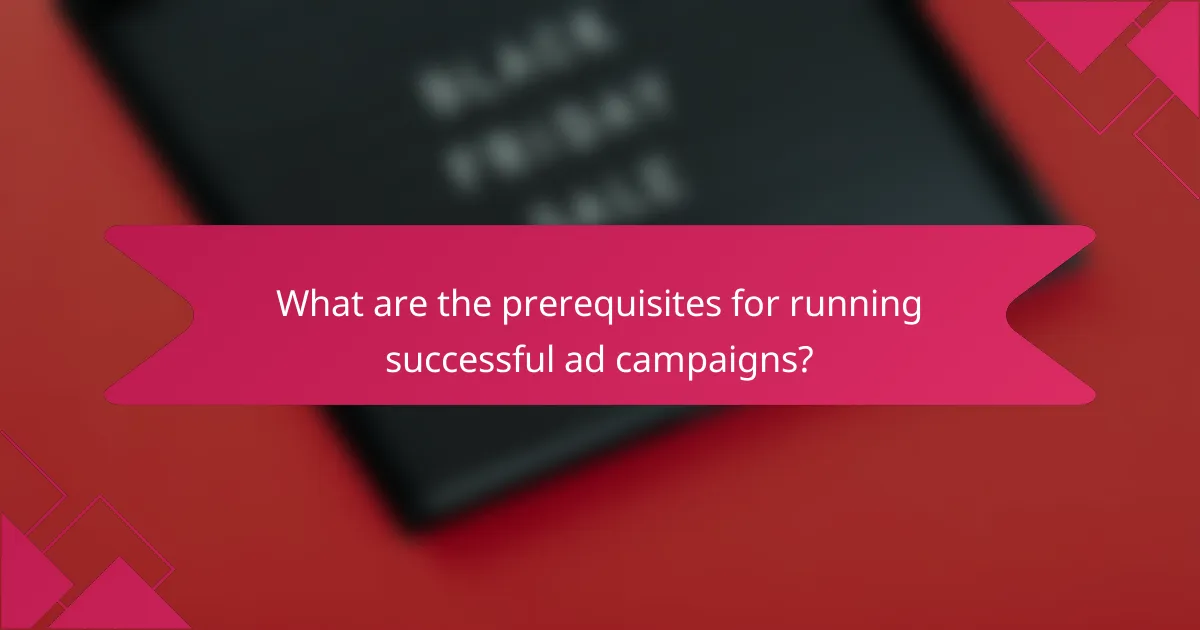
What are the prerequisites for running successful ad campaigns?
Successful ad campaigns require a clear understanding of your target audience and well-defined campaign goals. These prerequisites ensure that your ads reach the right people with the right message, maximizing engagement and conversion rates.
Defining target audience
Defining your target audience involves identifying the specific group of consumers most likely to respond to your ads. Consider demographics such as age, gender, location, and interests. For example, if you are selling high-end fitness equipment, your audience might include health-conscious individuals aged 25-45 with disposable income.
Utilize tools like Google Analytics or Facebook Audience Insights to gather data about potential customers. This information helps you create detailed buyer personas, which guide your ad content and targeting strategies.
Setting clear campaign goals
Setting clear campaign goals is essential for measuring success and guiding your advertising efforts. Goals can range from increasing brand awareness to generating leads or driving sales. For instance, if your aim is to boost website traffic, you might focus on click-through rates (CTR) and landing page conversions.
Establish specific, measurable, achievable, relevant, and time-bound (SMART) objectives to keep your campaign on track. For example, a goal could be to increase sales by 20% over the next quarter. Regularly review your progress and adjust your strategies as needed to stay aligned with your objectives.
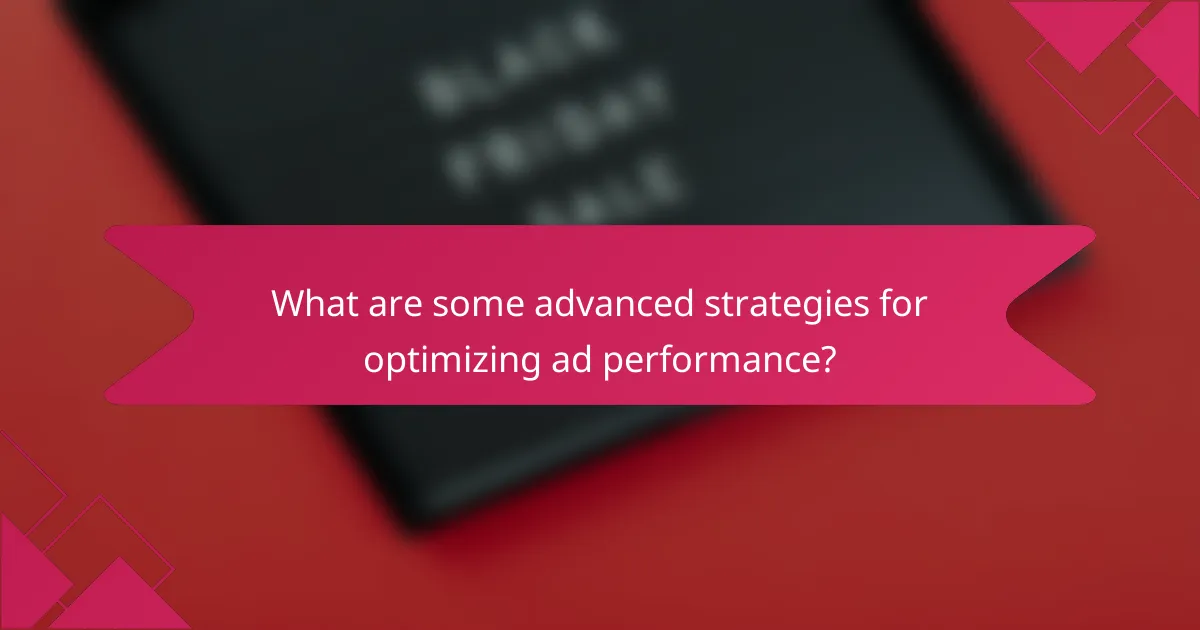
What are some advanced strategies for optimizing ad performance?
To optimize ad performance effectively, consider implementing advanced strategies that focus on data-driven decisions and continuous improvement. Techniques such as A/B testing, audience segmentation, and leveraging analytics can significantly enhance your ad campaigns.
Utilizing A/B testing
A/B testing, or split testing, involves comparing two versions of an ad to determine which performs better. This method allows advertisers to test various elements, such as headlines, images, and calls to action, to identify what resonates most with their audience.
When conducting A/B tests, ensure that you change only one variable at a time to accurately assess its impact. For instance, if you alter the headline, keep the image and call to action the same. Aim for a sample size that provides statistically significant results, typically in the low hundreds to thousands, depending on your audience size.
Common pitfalls include running tests for too short a duration or not having a clear hypothesis. To maximize effectiveness, establish a testing schedule and analyze results thoroughly before implementing changes across your campaigns.
